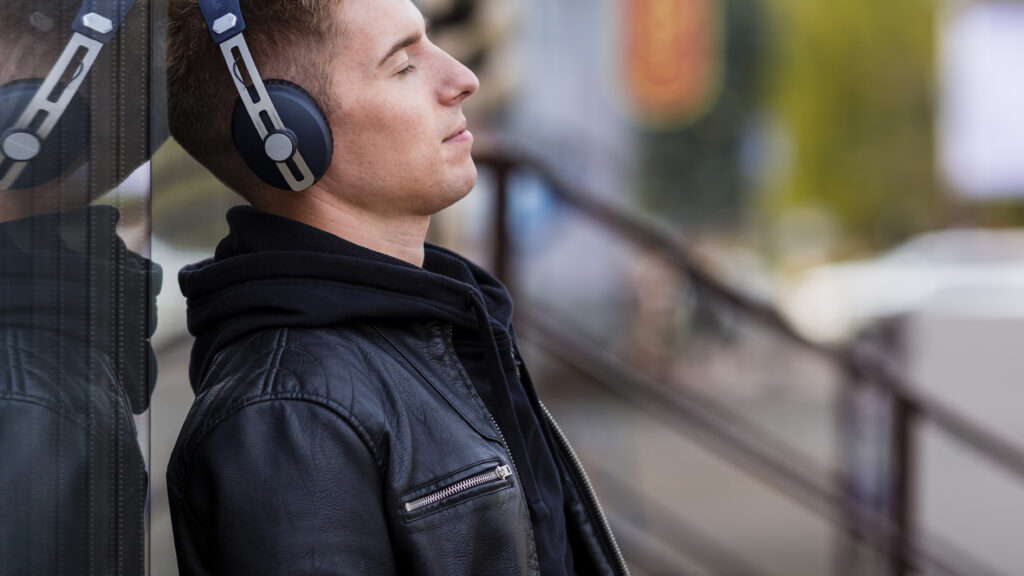A decreased tolerance to specific things and sounds you can sense, is known as a specific disorder called Misophonia. Although it’s still not recognized as a distinct medical disorder. However, researchers and medical officers are trying to find a formal consensus definition for research purposes and for diagnosing and treating the disorder.
Sometimes, specific noises trigger strong reactions and emotions. People who are triggered by these sounds or noises are more likely to have a misophonia disorder. However, most people do not react to such triggers or noises.
What is Misophonia?
Do you feel intense irritation, disgust, anxiety, or anger in response to specific sounds? Do certain noises cause extremely strong emotions in you that become overpowering with time and reach the point where you feel helpless to control such emotions? These are the symptoms of misophonia disorder where you instantly lose your tolerance level to specific noises and things that you sense in everyday life, such as with the use of your basic senses of touch, hearing, and seeing.
Sometimes, it may be only one trigger like sound that causes the reaction while sometimes several triggers take part in causing the irritating emotions. Triggers affect people differently. For example, some people have severe triggers that cause severe reactions while others have mild reactions which are controlled successfully. This can help them control their responses as well. However, some people find it hard to control their responses and react impulsively. In severe cases, people lose their ability to live in a specific environment or do certain things.
Which Type of People Are Affected by Misophonia?
There is no specific characteristic of people who are affected by misophonia disorder. However, research showed that some specific types of people seem to be more affected by the disorder, such as people assigned to females at birth. It means sex is the major factor that decides the ratio of people who get affected by misophonia disorder. According to a study, 65% to 85% of people with misophonia disorder belong to the female sex.
Another study explains that this disorder can develop at any age. However, most cases are found in the early teen years. More research is needed to diagnose the factors that can affect who’s most likely to develop misophonia.
Is Misophonia a Common Condition?
Research shows that every 1 in 5 people get affected by misophonia during their lifetime.
Symptoms and Causes
Symptoms of Misophonia
Your reaction to trigger sounds can help to identify the symptoms. Your reactions may seem to fall under the natural “fight-or-flight” instincts. Thus, your reactions may be:
Behavioral: Sound triggers such reactions. Your response to a certain sound is the basic symptom. These responses or reactions are sometimes instinct-driven and sometimes impulse-driven. This means you cannot completely control or overcome those responses. In rare cases, violent actions towards things or people were also observed due to misophonia.
Common behavioral reactions include:
- Violent reactions to stop the irritating noise but it’s rare.
- Vocal or verbal directions, such as yelling at who is making that triggering noise.
- Leaving that place where the trigger nose happens.
- Non-violent reactions to stop the noise.
- Avoiding the places or situations where trigger sounds can happen.

Emotional: When you feel or experience intense or overwhelming feelings due to a trigger noise, these can produce emotional responses. In some people, such feelings escalate rapidly like there is a catalyst or activator that is speeding up your emotional gas pedal. This condition can make you annoyed and the annoyance may lead to anger or even rage.More emotional reactions include:
- Irritation.
- Anger.
- Rage.
- Disgust.
- Fear.
- Anxiety.
Physical: Self-protective processes that cause a kick to your physical condition automatically. These reactions are similar to those actions that you show in frightening or dangerous situations.
Some common physical reactions are:
- Sweating.
- A sudden increase in your blood pressure.
- Chest tightness.
- An abrupt increase in your heart rate.
- Goosebumps.
The severity of symptoms does not remain the same for every victim of misophonia. If your symptoms are less severe your physical and emotional reactions may be in your control but in case of severe symptoms their effects may be stronger that you cannot control or overcome.
In addition, in severe cases, the victim reacts strongly through words or actions without thinking about them. This means that words or actions are spoken or performed as involuntary actions. That’s why such responses may be upsetting for others sometimes. In such situations, most affected people regret what they did afterward and feel sorry for what they said to others. They always try their best to control such reactions in the future.
Triggers of Misophonia

Any type of noise or sound can cause misophonia. However, some sounds are much stronger triggers than others. For example, The sound of TV, the radio, or other electronic devices can cause misophonia but the reaction to such triggers may not be as intense as would be if the source of sound is very near to your ear.The trigger sounds are of different types, such as:
| Types of Sounds | Examples |
| Breathing Noises | Heavy breathing, nose blowing, sniffing or snoring. |
| Throat or Mouth Noises | Loud kissing, throat clearing or coughing. |
| Movement Noises | Loud typing, eating utensils sounds, clicking pen or tapping the toes. |
| Eating or Drinking Noise | Gulping, swallowing, chewing, slurping, smacking lips or crunching sounds. |
Causes of Misophonia
Experts are still striving to find out the exact causes of misophonia but the truth is still unrevealed due to insufficient research in this field. However, earlier studies have suggested that a combination of factors is involved in causing misophonia. They suspect some factors that play a role in the development of misophonia disorder. Summer of those factors include:
- Genetics or family history.
- Brain structure differences.
- Other triggers.
Genetics or Family History
Misophonia may be a condition that develops in a family due to some genetic disorders. Experts have explained that there is evidence that indicates that a genetic mutation is the basic causative agent for developing misophonia. However, insufficient research cannot help us to conclude the results.
Brain Structure Differences
Researchers provided evidence that confirms that the people affected by misophonia may have certain differences in their brain structure and activity between certain areas of their brain.
The areas affected by these differences usually belong to controlling your responses to the sounds you hear and thus managing your emotions. Your brain has a self-built-in protection system that helps you feel and learn to associate emotions such as fear and anger in frightening situations.
Moreover, you can understand misophonia with this example. Turning on a radio at maximum volume or such sudden intense noise makes you aggressive and you instantly try to stop the noise. But misophonia mistakenly sends you into a fight-or-flight, ode. That drags you into physical, emotional, or behavioral reactions.
Other Health Conditions
Certain health conditions also contribute to developing misophonia in people, such as hearing-related conditions, neurodivergence, and mental health conditions. Here are some examples of such health conditions that play a role in causing misophonia symptoms:
Hearing-related conditions include:
- Hyperacusis.
- Hearing loss.
- Tinnitus.
Neurodivergent conditions include:
- Tourette syndrome.
- Hyperactivity disorder (ADHD).
- Autism spectrum disorder.post-traumatic stress disorder (PTSD).
- Mental health conditions include:
- Major depressive disorder (MDD).
- Borderline personality disorder (BPD).
Obsessive-Compulsive Disorder (OCD)
People having obsessive-compulsive traits also have more chances to develop misophonia but it is different from the criteria for a formal obsessive-compulsive disorder (OCD) diagnosis. A low percentage of people with these traits are affected by misophonia.
Tests and Diagnosis of Misophonia
Diagnosis of Misophonia
The Psychiatric Association of Mental Health still does not include misophonia in the list of most recent mental health conditions. The most observed five mental health conditions known as DSM-5 did not have misophonia as an addition. However, in 2023 a team of mental health experts created a consensus definition of misophonia to carry out more research for the diagnosis and treatment of the disorder.
Your healthcare provider may help you to diagnose the disorder by asking some questions about the feelings you experience during the nose. They evaluate the answers and then may tell you if you have a mild or severe type of misophonia symptoms. However, the procedure of diagnosis for misophonia is not the same as a formal diagnosis.
Treatment and Management
How Misophonia is Treated?
Although misophonia is not officially categorized as a mental disorder, its effects are treatable. Psychotherapy can help in treating or managing the symptoms of misophonia, the same as it is useful for other similar mental health conditions such as PTSD or OCD. Certain mental health therapies fail in treating misophonia but these therapies can help you identify the following:
- Reduction in your sensitivity to existing triggers.
- Finding ways to minimize the trigger noise.
- Identification of your riggers.
- Development of coping strategies.
- Application of techniques to avoid impulsive responses to trigger noises.
Treatment options for misophonia-related disorders like OCD, depression, or anxiety can help manage misophonia symptoms. The best option is to consult a healthcare provider because they can help you identify the condition and help to select an effective way of treatment. Some more things can also help you, such as:
Some more things can also help you, such as:
- Using common technologies, adaptation techniques, or items you can manage the conditions with sound sensitivity. Some examples are:
- Using noise generator sounds.
- Using noise-cancelling headphones or earplugs/earbuds.
- Listening to something with concentration keeps your brain-hurting-related processes focused on something other than listening for a triggering noise.
- Misophonia-affected people can also benefit from workplace accommodation. For example, your employer may provide you with such items as headphones or adjustments in policy that can help you avoid the triggering noise or reduce the intense effects they can cause.
In addition, your healthcare provider may help you to identify the resources that can help you acquire your workplace accommodations. You can get help from social media groups of people having misophonia where people share their ideas, tips, and resources to get rid of this condition.
Prognosis/ Outlook
A mild form of misophonia is not a matter of great concern. You can easily manage its symptoms and can quickly control the reactions and emotions created in response to misophonia disorder.
However, in more severe cases, the physics; and emotional reactions get more overwhelming and harsh. As a result, the fight-or-flight mode gets worse and it may be hard for you to control such behaviors.
In addition, in such situations, your brain starts operating on self-protecting autopilot. Thus you may behave without thinking. In this condition you get harsh and show reaction verbally or even physically at whatever or whoever is making the trigger noise. Thus your brain also acts hardwired to make the connections strong so that you might project yourself. Due to this internal self-defense system, your reactions to trigger noise may worsen over time and you start to develop or discover more ways to stop trigger sounds.
How Long Does Misophonia Last?
According to little research, misophonia is a long-lasting condition but more research is needed to confirm this theory.
Outlook for Misophonia
This is not a life-threatening condition. However, it harms your mental; health adversely. It also destroys your well-being and relationships. Other mental health conditions also increase the severity of misophonia.
People affected with misophonia always remain under threat of heating trigger noise. These feelings get overwhelming and affect your daily routine activities as well. Coping strategies and adapting some managing methods can help you to learn to treat misophonia. So you should try to find ways to treat the condition to improve your quality of life.
Conclusion
Misophonia is a trouble-causing condition and its triggering factors are so common that it may feel like you cannot escape from them. Misophonia is often annoying and unpleasant but it may not be severe enough to disturb your daily life. Although misophonia has not been considered an officially recognized condition by the Mental Health Association departments, healthcare providers still categorize it as a mental condition. They are working to explore its causes, symptoms, and treatments. Recent research has opened a new horizon in this field and findings have suggested different strategies to cope with this condition.
Studies can help you to find out new ways to know how misophonia happens and how it affects you. You can learn ways to manage and treat misophonia. Thus you can make your quality of life better and worry less about the trigger noises.







